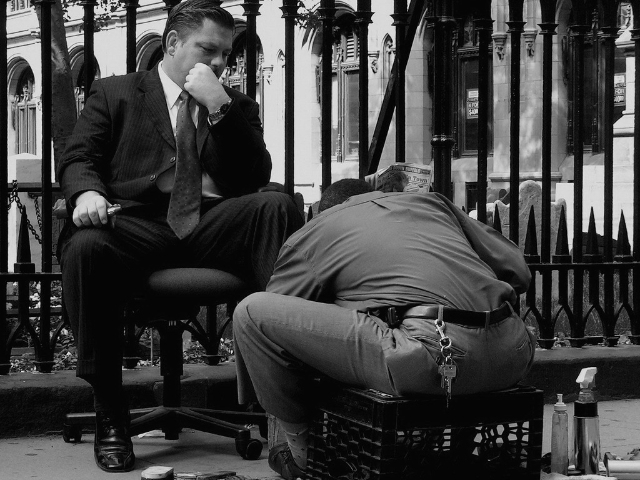[imagesource:flickr]
Many people consistently underestimate the income of the top 1%, and this misconception has far-reaching consequences.
Ignoring this reality not only distorts our understanding of wealth distribution but also hinders efforts to address the growing divide. A new study uncovers how this underestimation fuels a lack of support for redistributive policies, even as inequality continues to rise.
In recent decades, economic inequality has surged in numerous regions around the globe, especially in developed countries. One of the key factors behind this expanding divide is the astonishing increase in incomes among the wealthiest individuals at the top of the income spectrum.
As The Brighter Side notes, in the US for instance, between 1980 and 2020, the share of total income held by the top 1% nearly doubled—from 10% to 19%. By contrast, the share held by the next wealthiest 9% of the population (the top 10% excluding the top 1%) saw only a modest increase, rising from 24% to 27%.
Combined, the value of companies such as Apple, Microsoft and Saudi Aramco exceeds the GDP of every single country in Africa and Latin America combined. That’s 87 countries: virtually everything bought, sold, consumed produced and dreamed up by two billion people in a whole year, notes The Guardian.
I mean, hello, Elon Musk – one single man – is on course to becoming a trillionaire. That one followed by 12 zeros is almost impossible to comprehend. Even Ronald Reagan – a friend and ally to the ultra-rich if there ever was one – could not wrap his head around it.
The best he could come up with, “A few weeks ago I called such a figure, a trillion dollars, incomprehensible, and I’ve been trying ever since to think of a way to illustrate how big a trillion really is,” he said in 1981 when talking about the US national debt. “And the best I could come up with, is that if you had a stack of thousand-dollar bills in your hand only four inches high, you’d be a millionaire. A trillion dollars would be a stack of thousand-dollar bills 67 miles high.”
Although there are hoards of data that unmistakably highlight growing inequality, public support for wealth redistribution policies has remained relatively unchanged since the 1970s. This prompts a crucial question: why hasn’t the increasing gap between rich and poor sparked a greater call for redistributive measures?
Research indicates that one key factor could be that individuals often misjudge the reality of inequality, particularly at the top of the income ladder. While economic inequality is broadly acknowledged as an issue, perceptions of its scale differ significantly. Some people underestimate the vast chasm between the wealthy and the rest of society, while others might overestimate it, complicating our understanding of the problem.
This discrepancy between perception and reality—especially concerning the wealth held by the top income earners—has become the focal point of recent research. Scholars are investigating why so many individuals misjudge the fortunes of the richest and exploring the potential implications of this misunderstanding for support of economic policies.
Various theories from the social sciences provide differing explanations for how individuals perceive income inequality, particularly regarding the wealthiest members of society.
One prominent theory, known as the “upward social comparison hypothesis,” suggests that people are more likely to compare themselves to those richer than they are, rather than to those who are poorer.
On the other hand, the “network hypothesis” presents a different perspective. The argument posits that since people often live and work alongside others from similar socioeconomic backgrounds, they have limited interactions with those from different income groups. This social segregation can lead to a skewed understanding of the overall income distribution, especially when it comes to the wealthiest individuals. Consequently, many may underestimate the earnings of the top 1%.
Adding another layer to the complexity, cognitive biases also play a role in shaping how people perceive economic inequality. One such bias is “scope insensitivity,” which refers to the tendency to be less sensitive to large quantities.
For example, when thinking about the difference between someone earning $100 million and someone earning $200 million, people may not appreciate the vast disparity. To the average person, these figures may fall into the same category of “extremely rich.” However, when asked to think about smaller differences, such as between $40,000 and $80,000 in annual income, people are likely to be more precise.
Across the study board, people consistently underestimate the incomes of the wealthiest individuals and this has important implications for public policy, especially policies aimed at addressing economic inequality.
If people do not fully understand how much wealth is concentrated at the top, they may be less likely to support measures to redistribute that wealth.
For instance, the push for higher taxes on the rich might fall flat because the public doesn’t grasp just how deep their pockets really are.
[source:brighterside]





